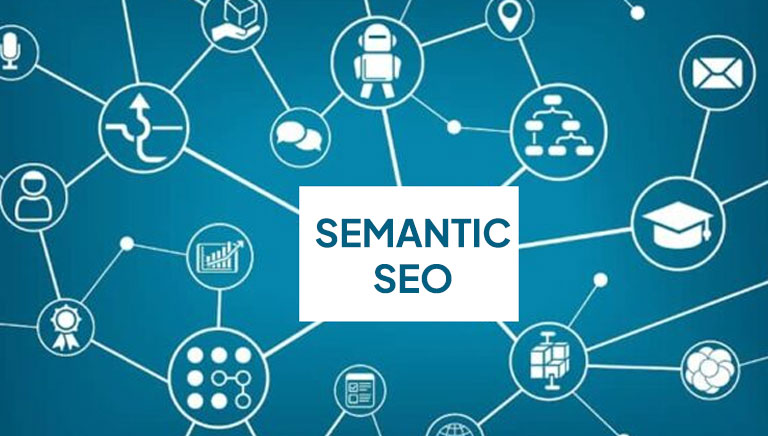Mastering Search Intent: The Key to Dominating Google Rankings in 2025

If you’re publishing content in 2025 and not optimizing for search intent, you’re leaving rankings — and revenue — on the table.
Search intent is no longer optional. It’s the backbone of modern SEO.
In this comprehensive guide, you’ll learn:
- What search intent is
- Why it’s critical for SEO
- How Google interprets it in 2025
- Real examples of search intent types
- How to map, optimize, and structure your content for it
- Pro tips, common mistakes, and an actionable checklist
Let’s dive in.
What is Search Intent?
Search intent (also known as “user intent”) is the reason behind a user’s query.
Why did they type that into Google? What outcome are they hoping for?
The Four Core Types of Search Intent:
- Informational – The user wants to learn something.
- Examples:
- “What is semantic SEO?”
- “How does AI affect content writing?”
- “2025 SEO trends”
- Examples:
- Navigational – The user is looking for a specific website, brand, or page.
- Examples:
- “ClickHype SEO blog”
- “Ahrefs login”
- “HubSpot keyword planner”
- Examples:
- Transactional – The user intends to make a purchase or take action.
- Examples:
- “Buy AI SEO tools subscription”
- “Download Surfer SEO trial”
- “Hire freelance writer UK”
- Examples:
- Commercial Investigation – The user is researching before deciding to purchase.
- Examples:
- “Best AI tools for bloggers 2025”
- “Surfer SEO vs. Frase comparison”
- “Affordable content writing tools”
- Examples:
Why Search Intent Matters More Than Ever in 2025
1. Google’s AI Understands Intent at a Deeper Level
Thanks to BERT, MUM, and Gemini, Google no longer just reads keywords — it interprets the meaning behind them.
Example:
- “How to lose weight fast” will not rank a product page — it wants step-by-step informational content.
- “Buy weight loss pills” clearly indicates transactional intent.
If your content doesn’t match the correct format or user expectation, it won’t rank.
2. Satisfying Intent = Strong Engagement Metrics
When your content aligns with user intent, metrics improve:
- Longer time on page
- Lower bounce rates
- Higher click-through rates
- More social shares and backlinks
These are all strong ranking signals in 2025.
3. Voice & AI Search Are Entirely Intent-Based
Voice searches often skip keywords and get straight to the point:
- “What’s the best tool for AI SEO in 2025?”
- “Compare Frase and SurferSEO”
To rank, your content must provide clear, concise, structured answers.
How to Identify Search Intent Like a Pro
A. Analyze the SERP Results
Type your target keyword into Google and study what ranks:
- Are the top results blogs, product pages, or videos?
- Are the titles question-based, listicles, or landing pages?
- Check the “People Also Ask” section for intent clues.
Example:
- For “AI SEO tools“: SERPs show listicles and comparisons → Commercial intent.
B. Use Intent Tools
- Semrush Keyword Intent Filter — classifies keyword intent
- Ahrefs SERP Overview — reveals search features and format
- Frase, SurferSEO — analyze what type of content is ranking
- AnswerThePublic & AlsoAsked — visualize follow-up questions
C. Understand User Psychology
Ask yourself:
- “Is the searcher looking for information, a solution, or a service?”
- “Where are they in the buyer’s journey?”
Map keywords to stages:
- Awareness → Informational
- Consideration → Commercial
- Decision → Transactional
How to Optimize Content for Every Type of Search Intent
1. Match the Content Format to Intent
| Intent Type | Best Content Formats |
|---|---|
| Informational | Guides, tutorials, how-tos, definitions |
| Navigational | Brand pages, tool dashboards, homepage |
| Transactional | Product pages, landing pages, sales copy |
| Commercial Investigation | Comparisons, reviews, expert roundups |
Example:
- Keyword: “Best keyword research tool for beginners”
- Intent: Commercial
- Ideal format: Comparison blog post with screenshots, pros/cons, CTAs
2. Structure Content for Intent Fulfillment
- Use subheadings to address related questions
- Add visuals: infographics, comparison tables, screenshots
- Include TL;DR summaries or quick answers near the top
3. Optimize Your Title, Meta, and Headers
Reflect the user’s goal clearly:
- ✅ “Top 7 Free AI Tools for SEO in 2025 (Ranked & Reviewed)”
- ❌ “AI SEO Tools You Should Try Someday”
4. Build FAQs & Structured Data
- Use schema markup to boost eligibility for featured snippets
- Create FAQ sections with short, keyword-aligned answers
- Cover user questions from “People Also Ask”
5. Link Content Based on Intent Funnel
Guide users through:
- Informational → Learn more (Commercial)
- Commercial → See pricing (Transactional)
- Transactional → Complete action (Checkout or Contact)
Real-World Case Study: Intent Misalignment Fix
Before:
- Keyword: “how to use Surfer SEO”
- Page Type: Product feature page
- Result: Page never ranked
Fix:
- Replaced with a blog-style tutorial guide
- Included screenshots, step-by-step explanation, and video demo
Result:
- Jumped from position 50+ to top 3 within 2 months
Search Intent Optimization Checklist
✅ Analyze SERP layout before creating content
✅ Match format to the dominant content type
✅ Use a clear H1 and meta that reflect user goals
✅ Include visuals and structured content
✅ Add FAQs based on PAA and Reddit threads
✅ Use internal linking to lead readers through the intent funnel
✅ Re-audit older content quarterly for intent alignment
Common Mistakes to Avoid
- ❌ Targeting a transactional keyword with a blog post
- ❌ Ignoring SERP intent signals
- ❌ Overloading content with keywords instead of solving problems
- ❌ Using clickbait titles that don’t match content depth
Expert Tips to Stay Ahead in 2025
💡 Tip #1: Segment Keywords by Intent in Your Content Calendar
Plan your month with:
- 30% Informational (to bring traffic)
- 40% Commercial (to educate and convert)
- 30% Transactional (to drive direct actions)
💡 Tip #2: Optimize for Featured Snippets
Structure your content:
- Definition style for “what is…”
- Steps for “how to…”
- Lists for “top tools…”
💡 Tip #3: Watch Intent Shifts Over Time
SERPs evolve. What ranked yesterday might not tomorrow. Use tools like:
- SERPWatcher
- Content Decay Trackers
Expanded FAQs About Search Intent
Q1: Can a single page target multiple intents?
Yes, but keep one dominant intent per page. You can layer secondary intents (e.g., educational + CTA).
Q2: What if search intent is unclear?
Use Google Trends and look at top-ranking content. Check engagement data (bounce rate, CTR).
Q3: Should eCommerce sites worry about intent?
Absolutely. Even product pages can target informational queries (“how to use X”) for top-funnel traffic.
Q4: How does AI affect search intent optimization?
AI helps Google interpret intent more accurately, so your content must be more context-aware than ever.
Q5: Do keywords still matter?
Yes — but only if used in context. Intent > Keywords in 2025.
Final Thoughts
Search intent is no longer a nice-to-have — it’s essential for ranking in 2025.
When you understand why someone searches, you can:
- Deliver exactly what they want
- Improve engagement metrics
- Win featured snippets
- Boost conversions
It’s not about gaming Google — it’s about serving real people better than your competitors.
Want more future-proof SEO strategies?
Explore expert guides, tools, and AI-driven content insights at ClickHype.co.uk — your go-to SEO lab for 2025.










